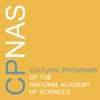Date: Sun, 11 Mar 2007 10:42:19 -0500
At a time where the “self” has been
 characterized by philosopher Daniel Dennett as a “responding, responsible artifact, what role do images play in activating memory traces?All images conjure up undercurrents of emotion. Mirror neurons reflect the outside
characterized by philosopher Daniel Dennett as a “responding, responsible artifact, what role do images play in activating memory traces?All images conjure up undercurrents of emotion. Mirror neurons reflect the outsideworldsomatically bringing it back inside. Sometimes these somatic responses trigger feelings of empathy or fear, pleasure or even panic. Although we know that what we are looking at is a “critical fiction,” somatic responses in many cases trump intellectual stasis.
As processes of signification change, as you have stated,
 with regard to the ways in whichMRI technology creates pictures from numbers, I am interested in the ways thatscientific iconography, defunct or otherwise, can be repurposed for aesthetic and cultural consideration. What intrigues me most about the early 20th century psychological projective test, the Rorschach, is that not only has it become a cultural icon, but from a scientific prospective, the enormous extent to which these plates have been studied and employed. (Peter Galison.)
with regard to the ways in whichMRI technology creates pictures from numbers, I am interested in the ways thatscientific iconography, defunct or otherwise, can be repurposed for aesthetic and cultural consideration. What intrigues me most about the early 20th century psychological projective test, the Rorschach, is that not only has it become a cultural icon, but from a scientific prospective, the enormous extent to which these plates have been studied and employed. (Peter Galison.)By experimenting with 3-D software programs, I wanted to see what would happen if I turned the Rorschach inkblots into objects. Would they still appear as if randomly generated?Would they allude to possible new connections between the ways in which 3-dimensionality becomes a value-added strategy in both artistic practice and regenerative medicine ? (see Vladimir Mironov and bio-printing on this site.)

What in fact resulted in my experiment, were a series of sculptures that appeared to be very reminiscent of the natural world. The sculptures in some cases looked like animals and in other cases body parts and bones. Holding these sculptures in my hands, generated within me, an uncanny feeling of embodied imagination. That perhaps is my interest in sculptural form.
Images: Rapid prototype sculptures (2004-2006) from Anker's Rorschach Series
to post a response, click on the "comment" button below
to return to the main page, to go www.visualcultureandbioscience.org

No comments:
Post a Comment